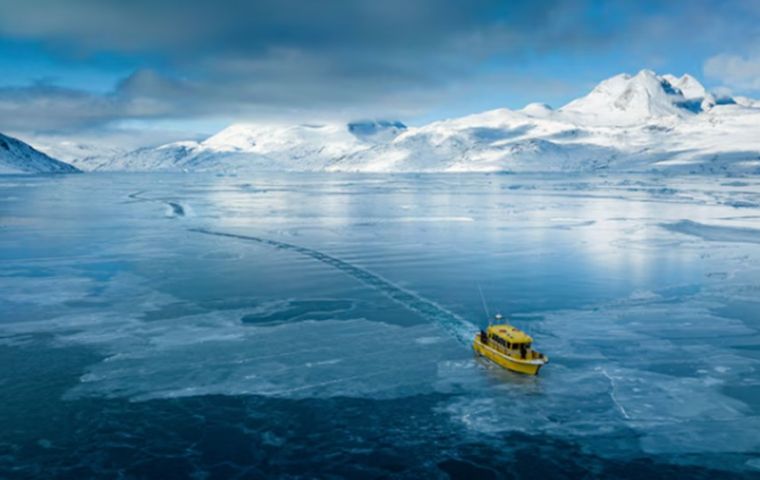MercoPress. South Atlantic News Agency
Glaciers melting rapidly call for action
 The preservation of glaciers is a matter of survival, Saulo said
The preservation of glaciers is a matter of survival, Saulo said The world has lost 5% of its ice volume over the past 20 years, with an annual melt of 273 billion tons, according to a recent study by the United Nations (UN) and the World Meteorological Organization (WMO). Regions like Europe (39% loss), the Caucasus and Middle East (35%), and New Zealand (29%) were heavily impacted as all 19 glacier regions globally lost mass in 2024 for the third consecutive year, with the 2022-2024 period marking the largest three-year loss ever, including 450 billion tons in 2022 alone.
Since 1975, glaciers (excluding Greenland and Antarctica) have shed over 9,000 billion tons, contributing 18 mm to sea-level rise since 2000, with 25-30% of that rise from glacier melt, it was explained. The World Glacier Monitoring Service (WGMS) estimates that glaciers, excluding the Greenland and Antarctica ice sheets, have lost more than 9,000 billion tons of mass since 1975. “This level of glacier loss is unprecedented. We are watching entire ecosystems change before our eyes. If current trends continue, glaciers in Western Canada, the USA, Scandinavia, Central Europe, the Caucasus, New Zealand, and even the Tropics will not survive the 21st century,” WGMS Director Michael Zemp pointed out.
This accelerating retreat threatens water supplies for millions, as glaciers hold 70% of the world’s freshwater, and could see many in Western Canada, Scandinavia, Central Europe, the Caucasus, New Zealand, and the tropics vanish by 2100 if current trends persist. In addition, sea ice in the Arctic is at its lowest level in 47 years of satellite records.
The UN declared 2025 the “International Year of Glacier Conservation” and March 21 as World Glacier Day to urge action, emphasizing that reducing greenhouse gas emissions is the only way to slow the melt.
“The preservation of glaciers is not only an environmental, economic, and social necessity. It is a matter of survival,” said the Argentine Celeste Saulo, Secretary-General of the WMO.
Rising temperatures, exemplified by the warmest January on record in 2025, exacerbate the crisis, with Arctic sea ice at a 47-year low, further driving global warming and sea-level rise, exposing 200,000-300,000 more people per millimeter to flooding risks.
Sea ice plays a key role in regulating global temperature by reflecting the sun's rays and preventing ocean warming. Its decline contributes to the accelerated melting of glaciers and rising sea levels.




Top Comments
Disclaimer & comment rulesCommenting for this story is now closed.
If you have a Facebook account, become a fan and comment on our Facebook Page!